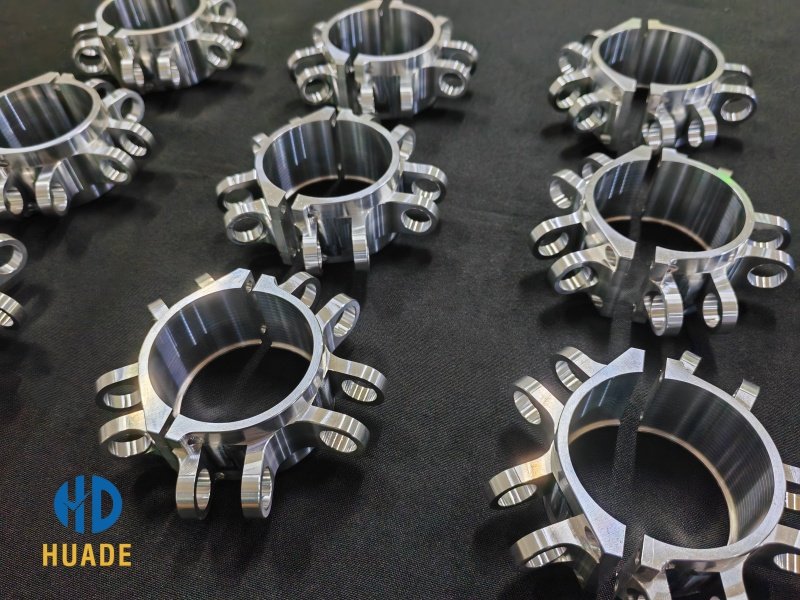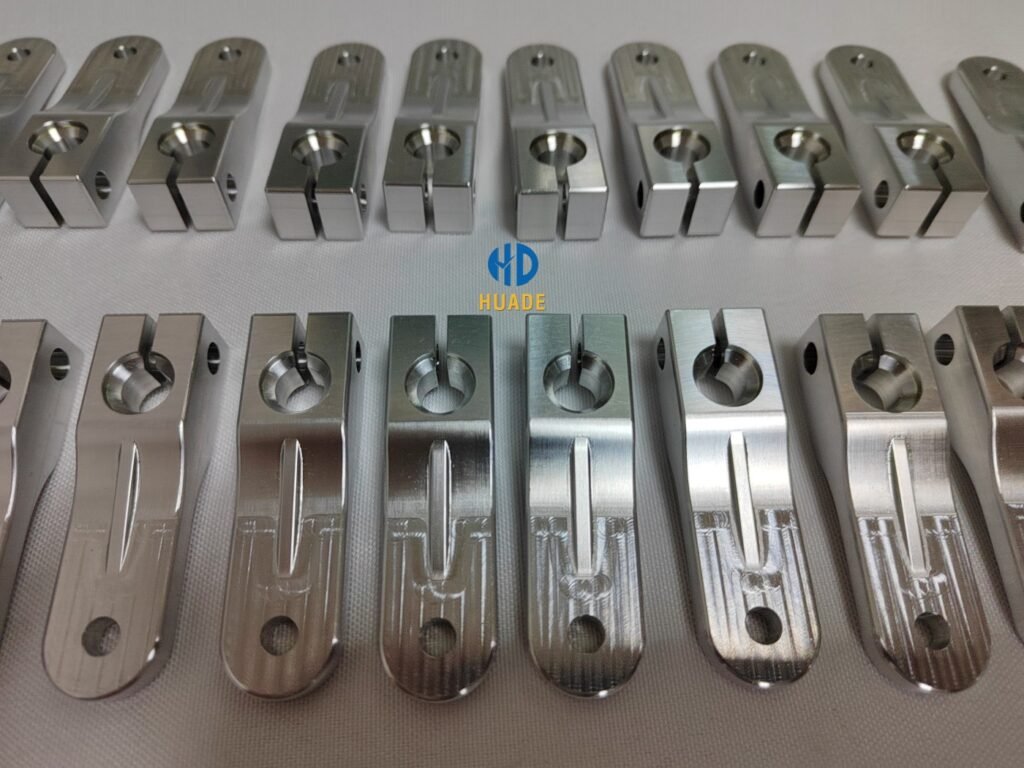Introduction
Understanding the Fundamentals of Insert Radius in Precision Machining
In the world of CNC machining, selecting the best insert radius for finishing milling steel is one of the most critical decisions influencing surface quality, tool life, and overall machining efficiency.
At Dongguan Huade Precision Manufacturing Co., Ltd. we often trace machining challenges—especially when cutting steel or aluminum—back to improper insert selection.
The relationship between insert geometry, material characteristics, and machining parameters creates a complex interplay that demands careful consideration. This article explores not only the technical aspects of insert radius selection but also how this knowledge connects to broader machining capabilities, including aluminum fabrication and the services offered by precision CNC machine companies in Georgia and other manufacturing hubs.
The Science Behind Insert Radius Selection
What Is Insert Radius and Why Does It Matter?
The insert radius, often marked as RE on cutting tools, is the curved section at the tip of a cutting insert. This small detail directly influences:
- Surface finish quality
- Cutting stability and vibration resistance
- Tool durability and wear patterns
- Chip formation and evacuation efficiency
- Power requirements and cutting forces
For finishing operations in steel, selecting the proper radius is essential. Too small a radius can lead to premature insert wear, while too large a radius might cause vibration that compromises surface quality.

The Relationship Between Insert Radius and Surface Finish
The connection between best insert radius for finishing milling steel and surface finish quality cannot be overstated. The radius determines how the cutting edge engages with the material, influencing the microscopic “scallop” pattern left on the machined surface.
Industry experts recommend maintaining a radial depth of cut about one-half to two-thirds of the nose radius for optimal results. For example, with a 0.016″ (0.4 mm) nose radius insert, your ideal radial depth would be between 0.008″ and 0.011″.
| Steel Type | Recommended Radius Range | Best for Finishing | Special Notes |
|---|---|---|---|
| Low Carbon Steel | 0.4–0.6 mm | 0.4 mm | Good for general purpose applications |
| Alloy Steel | 0.6–0.8 mm | 0.6 mm | Suitable for 4130, 4140 alloys |
| Tool Steel | 0.8–1.2 mm | 0.8 mm | Provides adequate edge strength |
| Stainless Steel | 0.8–1.2 mm | 0.8 mm | Helps with heat distribution and BUE reduction |
Practical Application in CNC Machining Operations
Selecting the Optimal Insert Radius
Choosing the best insert radius for finishing milling steel requires considering setup rigidity, machine power, and desired surface finish.
- Less rigid setups benefit from smaller radii (≈0.4 mm) to reduce cutting forces and vibration.
- More rigid machines can use larger radii (0.8–1.2 mm) for smoother finishes but must manage higher cutting loads and heat.
Interplay with Cutting Parameters
Proper parameter selection is critical. Feed rate must align with the chosen radius:
| Insert Radius | Recommended Max Feed (Finishing Steel) | Typical Surface Finish (Ra) |
|---|---|---|
| 0.4 mm | 0.10–0.15 mm/rev | 3.2–6.3 µm |
| 0.8 mm | 0.20–0.30 mm/rev | 1.6–3.2 µm |
| 1.2 mm | 0.30–0.45 mm/rev | 0.8–1.6 µm |
Connecting to Aluminum Fabrication & Regional Expertise
Aluminum Fabrication Insights
While this guide focuses on steel, the same principles apply when you search for the best aluminum fabrication near me.
Quality aluminum shops—like those listed on Fabricators & Manufacturers Association—apply careful insert-geometry selection to maintain exceptional surface finishes. Softer aluminum alloys often require sharper edges and positive rake angles, but the feed-to-radius relationship remains fundamental.
Regional CNC Expertise – Example: Georgia
If you are seeking the best CNC machine company Georgia offers, look for suppliers who demonstrate deep knowledge of insert selection and process optimization. Georgia’s established manufacturing network includes companies experienced in high-precision CNC machining of both steel and aluminum.

Advanced Considerations for Professional Machinists
Overcoming Common Challenges
- Vibration: If vibration persists even with correct parameters, try a smaller radius insert to lower cutting forces.
- Tool Wear: Larger radii distribute cutting forces and may extend tool life but can increase heat—use high-performance coolants such as those referenced by MachiningCloud Tooling Guides.
Chip Control
The best insert radius for finishing milling steel significantly influences chip formation.
- Smaller radii create thinner chips for easier evacuation—ideal for deep pockets or complex parts.
- Larger radii create wider chips that carry more heat but may crowd tight areas.
A Systematic Approach to Insert Selection
- Analyze Your Material – Identify steel grade and hardness.
- Assess Setup Rigidity – Choose smaller radii for less rigid setups.
- Define Surface Requirements – Balance finish with cycle time.
- Select the Radius – Use recommended ranges as a starting point.
- Optimize Parameters – Adjust feeds and speeds to match geometry.
- Validate & Refine – Run test cuts and fine-tune.
Conclusion: From Theory to Production
Selecting the best insert radius for finishing milling steel is both an art and a science. By integrating correct tool geometry with optimized cutting parameters, manufacturers gain:
- Quality Consistency – Uniform surface finish across production runs.
- Cost Efficiency – Extended tool life and less scrap.
- Process Reliability – Reduced vibration and improved chip control.
Whether you need high-precision aluminum parts or are sourcing the best CNC machine company Georgia has to offer, these insert-selection principles ensure superior results.
At Dongguan Huade Precision Manufacturing Co., Ltd. we apply these fundamentals daily to deliver consistent, high-quality CNC machining for clients worldwide.
